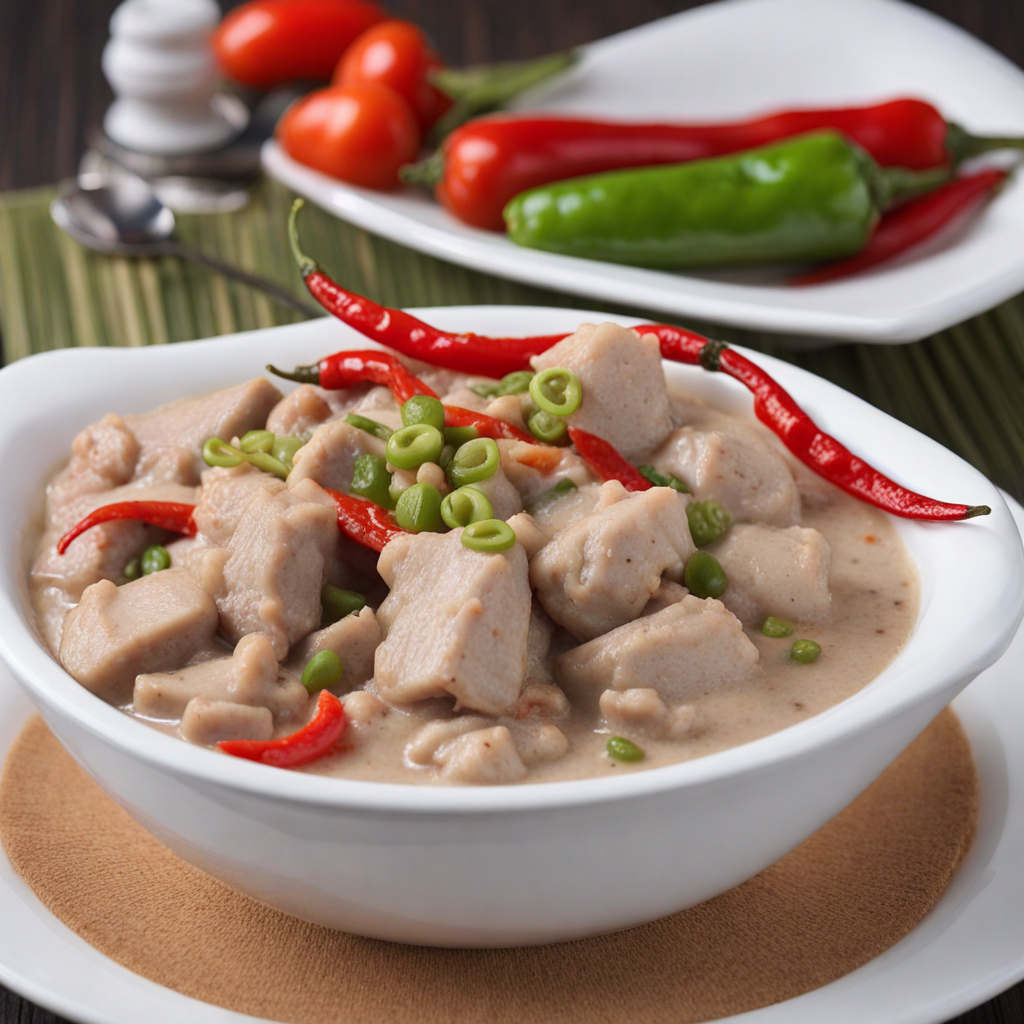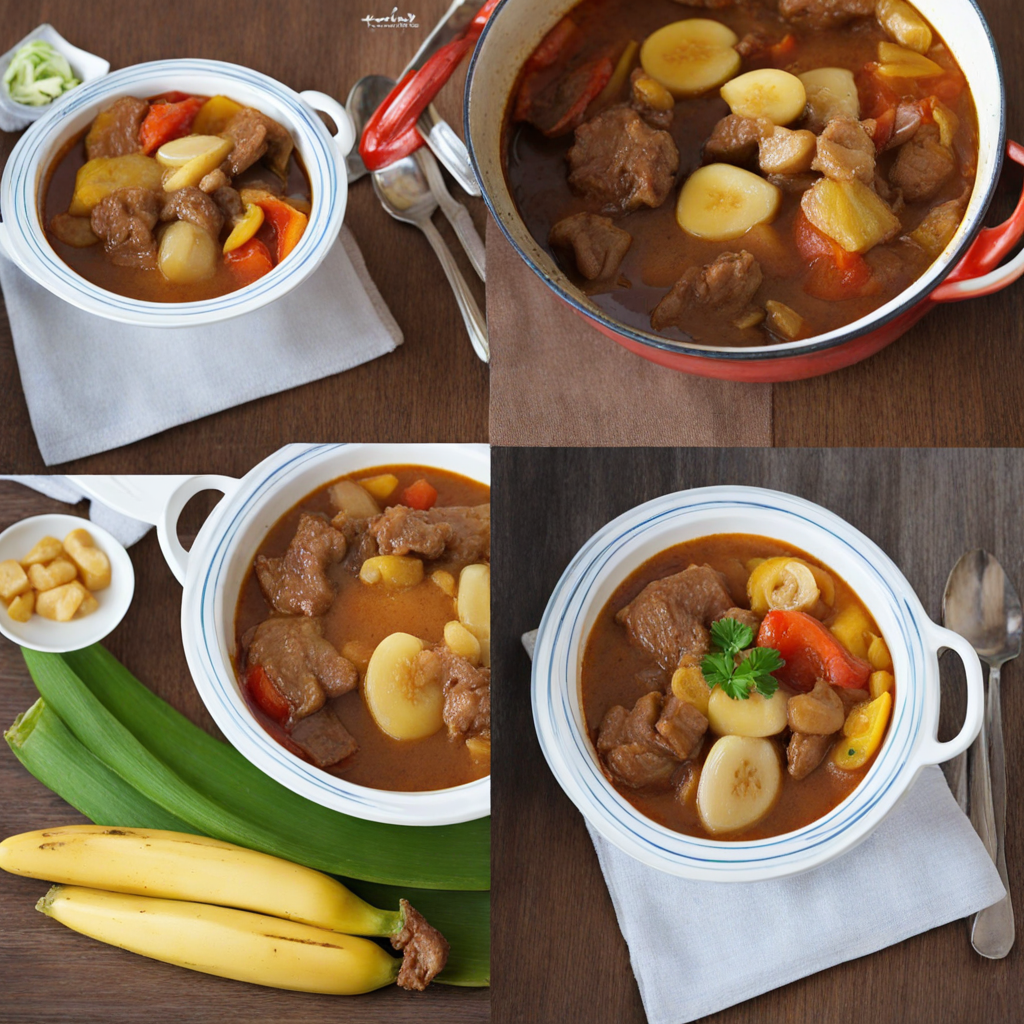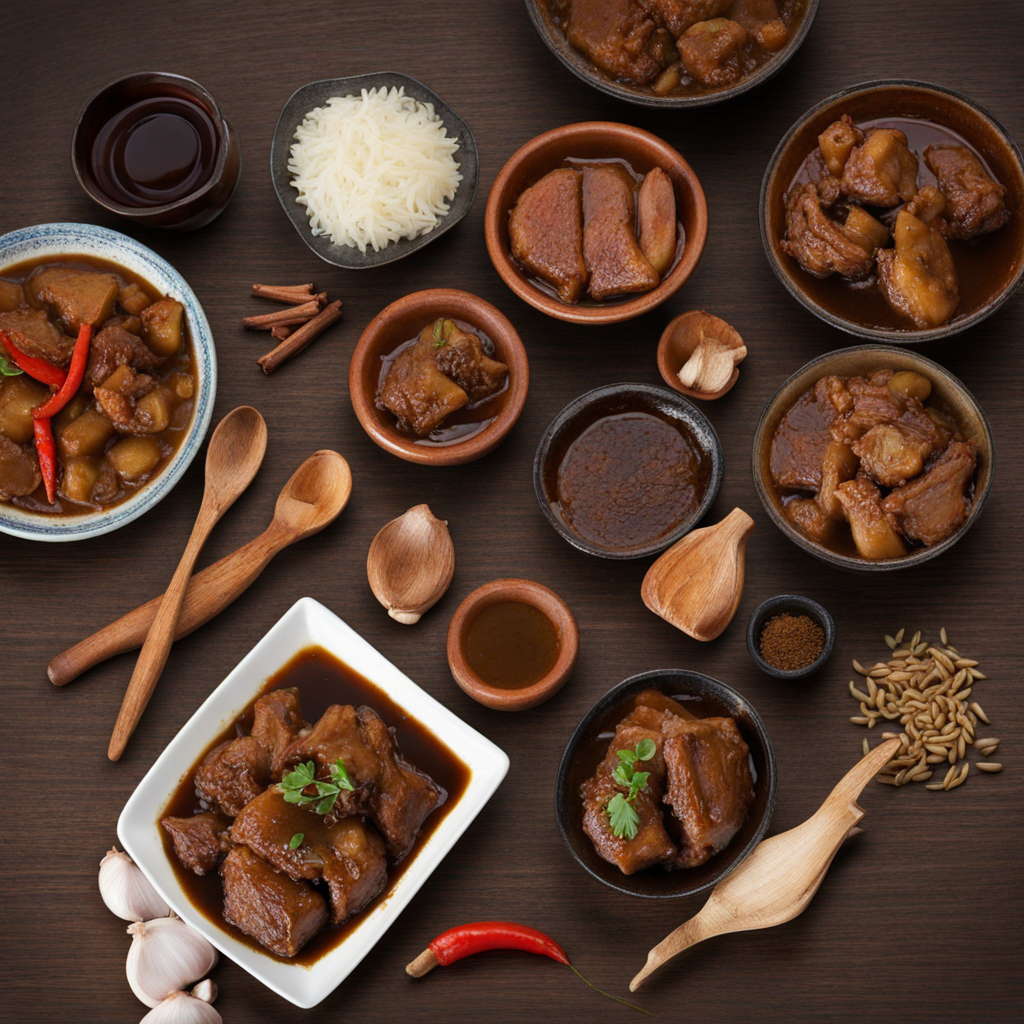Bicol Express
Bicol Express is a vibrant and flavorful dish hailing from the Bicol region of the Philippines, known for its bold use of spices and coconut milk. The dish primarily features tender chunks of pork, which are simmered until they are melt-in-your-mouth soft. The pork is marinated in a blend of shrimp paste, garlic, onions, and chili peppers, creating a savory and slightly spicy flavor profile that is both comforting and exhilarating. The heat from the chili peppers is a signature element of Bicol Express, reflecting the region's love for spicy cuisine.
How It Became This Dish
The Spicy Journey of Bicol Express: A Culinary Icon from the Philippines Bicol Express, a fiery and flavorful dish that has captivated taste buds both locally and internationally, is a hallmark of Filipino cuisine. This beloved dish is named after the Bicol Region in the southeastern part of Luzon Island, known for its lush landscapes, vibrant culture, and, notably, its penchant for spicy food. The history of Bicol Express is as rich and layered as its ingredients, offering a fascinating glimpse into the culinary evolution of the Philippines. #### Origins and Early Influences The roots of Bicol Express can be traced back to the indigenous culinary traditions of the Bicol Region, where the use of coconut milk and chili peppers is prevalent. The Bicolano people have long utilized local ingredients like coconut, shrimp paste (bagoong), and an abundance of chili varieties, particularly the small but potent bird's eye chili (siling labuyo). These staples reflect the agricultural bounty of the region, where coconut palms flourish, and the climate supports the growth of various spices. The dish is believed to have evolved from a traditional Bicolano recipe called "Ginataang Baboy," which translates to "pork in coconut milk." This dish, characterized by its creamy sauce and spicy kick, laid the groundwork for what would become Bicol Express. The use of coconut milk is not merely a flavor profile; it also serves as a unifying element that ties together the diverse ingredients, showcasing the Bicolano's resourcefulness in their cooking. #### The Birth of Bicol Express The name "Bicol Express" is a nod to the train service that once operated between Manila and the Bicol Region. It is said that in the 1970s, a chef named Enrico "Rico" G. S. S. A. De Guzman, who worked at the renowned restaurant "The Aristocrat," created the dish as a homage to the flavors of his homeland. The dish quickly gained popularity in Metro Manila, particularly in the bustling streets of Malate, where it became a staple in local eateries and restaurants. Bicol Express was not just a dish but a culinary representation of the Bicolano identity, embodying the region's love for bold flavors and an appreciation for the richness of life. The dish was initially served in a more straightforward manner, focusing on the combination of pork, chili, and coconut milk. However, as it gained fame, it began to adapt to different palates, leading to various interpretations across the archipelago. #### Cultural Significance Bicol Express stands as a symbol of the vibrant culture of the Bicol Region. It encapsulates the spirit of the Bicolano people: warm, hospitable, and unafraid of heat—both in terms of spice and life's challenges. The dish is often served during family gatherings, celebrations, and feasts, reinforcing its role in fostering community and connection. In the broader context of Filipino cuisine, Bicol Express reflects the archipelago's culinary diversity, shaped by historical influences from indigenous practices, Spanish colonization, and later American and Asian interactions. The fusion of flavors and techniques is a testament to the Philippines' rich history of exchange and adaptation. Moreover, Bicol Express has also become a source of regional pride. As Filipino cuisine gained international recognition, Bicol Express emerged as a quintessential representation of this culinary heritage. It is frequently featured in food festivals and culinary competitions, showcasing the region's unique flavors to a global audience. #### Evolution and Modern Interpretations As Bicol Express continued to gain popularity, chefs and home cooks began to experiment with the dish, leading to a variety of interpretations. While the traditional version consists of pork, coconut milk, shrimp paste, and chili peppers, modern adaptations have seen the incorporation of chicken, beef, and even seafood. Vegetarian versions have also emerged, using tofu or vegetables as substitutes for meat while maintaining the essence of the dish through the coconut milk and spices. The dish's versatility has allowed it to transcend cultural boundaries. Restaurants across the Philippines and beyond now offer their take on Bicol Express, often infusing it with local ingredients or techniques. This evolution has not diluted the dish's authenticity; instead, it has enriched it, allowing Bicol Express to resonate with a wider audience while preserving its core flavors. In recent years, the rise of social media and food blogs has further popularized Bicol Express. Home cooks and food enthusiasts share their interpretations of the dish, often highlighting unique twists that reflect personal tastes or regional variations. This digital platform has created a community of Bicol Express lovers, celebrating the dish's history while encouraging innovation. #### Conclusion: A Culinary Legacy Bicol Express is more than just a dish; it is a narrative woven into the fabric of Filipino culture. Its origins in the Bicol Region, combined with its growth in popularity and adaptations, reflect the dynamic and evolving nature of Filipino cuisine. The dish embodies the spirit of the Bicolano people—bold, flavorful, and deeply rooted in tradition. As Bicol Express continues to make its mark on the culinary world, it serves as a reminder of the Philippines' rich heritage and the power of food to connect people. Whether enjoyed in a humble eatery or a fine dining restaurant, Bicol Express invites everyone to savor its spicy warmth and the stories it carries, making it a true icon of Filipino cuisine. In a world that constantly seeks new flavors and experiences, Bicol Express stands as a testament to the enduring legacy of regional dishes and the cultural significance they hold. So, whether you are a seasoned fan or a newcomer to this fiery delight, each bite of Bicol Express is not just a culinary experience but a journey through the heart of the Philippines.
You may like
Discover local flavors from Philippines







